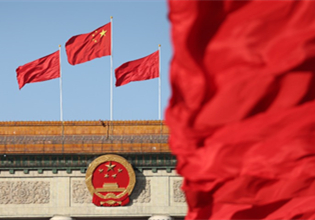Ulan Buh Desert shrinks due to anti-desertification efforts
Anti-desertification efforts made in the Ulan Buh Desert – located in the area administered by Bayannuur city in North China’s Inner Mongolia autonomous region – are a successful example of China's leading efforts at global greening.
The Ulan Buh Desert means "Red Bull" desert in Mongolian. It is one of the eight largest deserts in China, covering a total area of nearly 10,000 square kilometers. Of this, desert area at 5.06 million mu, or 337,333 hectares, is located the area under the jurisdiction of Bayannuur city.
Since the early 1950s, Bayannuur has carried out large-scale tree planting and afforestation.
A windbreak and sand-fixing forest belt with a length of 154,000 meters and a width of 100-300 meters was built on the eastern edge of the Ulan Buh Desert.
Environmentalists say the belt has played an active role in preventing the eastward movement of the desert and protecting the Hetao Plain. This feat has also become a model for mankind's desert treatment and has been recorded in the official history of the United Nations' desert control.
In recent years, a new sand-fixing forest belt, some 154 kilometers long and around 50 meters wide, has been built at the desert’s eastern edge.
According to the results of the fifth national desertification and desertification audit, the area covered by the Ulan Buh Desert in Bayannuur city has decreased from 5.06 million mu in the past to 2.56 million mu at present.
The area of desertified land has decreased by 2.50 million mu (166,666.67 hectares).
Of this, 418,800 mu is mobile sandy land and the area of semi-fixed sandy land covers 791,900 mu.



 Print
Print Mail
Mail





